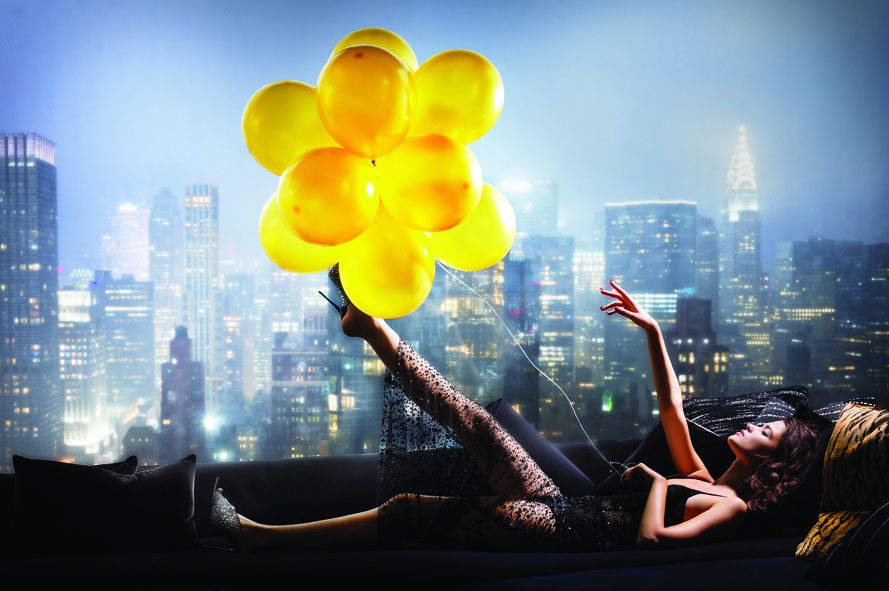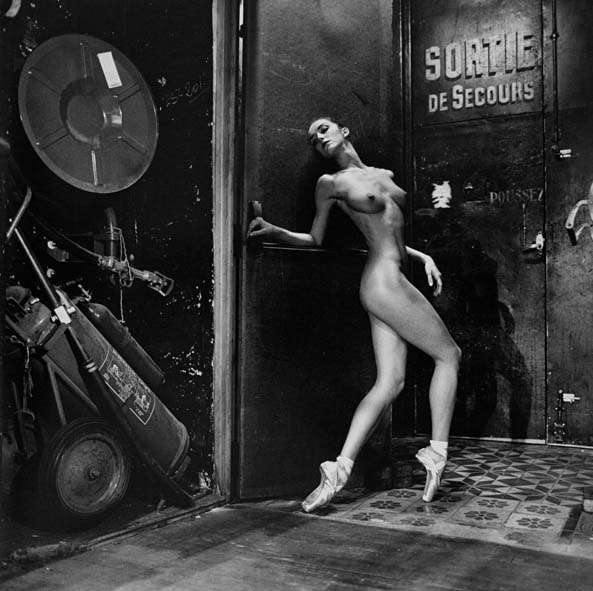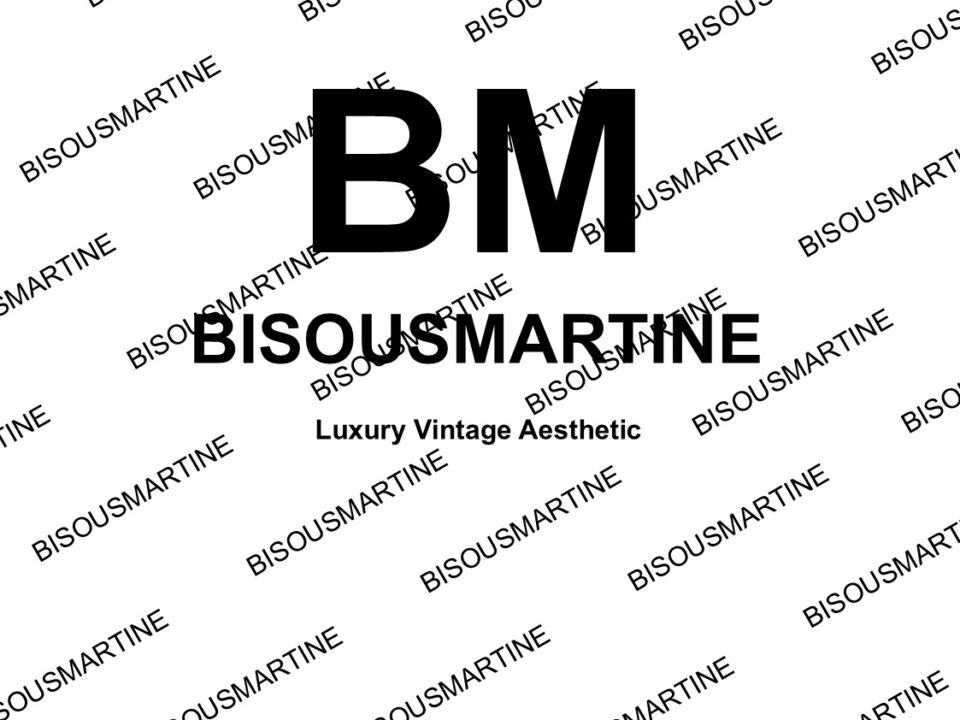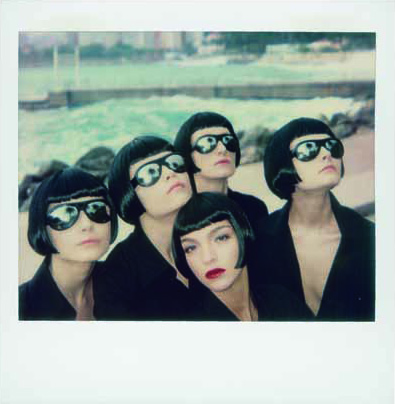Nadine Dinter PR is an owner-managed agency for media relations, PR consulting, and art administration. With its special focus on photography, Nadine Dinter PR supports cultural institutions in Germany and beyond, including museums, galleries, foundations, festivals, and private collections. The Berlin-based agency also works across a variety of sectors in the fields of contemporary art, lifestyle, and art & commerce.
David Drebin “I Love New York”
I Love New York is a tribute to the city of dreams, inviting readers to experience the vibrant energy and romantic allure of New York through the eyes of internationally acclaimed artist David Drebin.
In his extraordinary coffee table book I Love New York, Drebin presents an intimate homage to the city that never sleeps. With its impressive format and artfully designed cover, this publication is a visual treat for art lovers everywhere.
Behind every photo lies a story waiting to be discovered. These images tell of seductive encounters and the countless possibilities that New York has to offer. Drebin takes us on a journey into a dream world, where every moment is infused with romance and longing. The dramatic cityscapes and cinematic aesthetics lend his work a striking depth and intensity.
David Drebin, born in Toronto in 1970 and a graduate of the prestigious Parsons School of Design, has earned an international reputation as a master of visual storytelling. His work is defined by a distinctive blend of voyeuristic and psychological perspectives. Themes of melancholy, as well as humor, find their place in Drebin’s images, imbuing them with an emotional resonance that captivates viewers.
I Love New York is more than just a photography book; it is an invitation to immerse yourself in a world where love and the joy of living are palpable – revealing New York in an entirely new light. Let yourself be enchanted by David Drebin’s masterful imagery, and add this exquisite volume to your collection.

Dialogues. Collection FOTOGRAFIS x Helmut Newton
On 4 September 2025, the Helmut Newton Foundation in Berlin will open its new double exhibition: Newton, Riviera and Dialogues. Collection FOTOGRAFIS x Helmut Newton.
With Dialogues. Collection FOTOGRAFIS x Helmut Newton, the Helmut Newton Foundation presents a fresh perspective on the work of its founder. This exhibition takes the form of a playful visual experiment – one that fully unfolds through the viewer’s on-site experience.
On two occasions in recent years, the Helmut Newton Foundation has presented private photography collections in addition to its solo and thematic group exhibitions. The first was Between Art & Fashion (2018), showcasing Carla Sozzani’s private collection from Milan. The second, in 2024, was Chronorama, originally presented at Palazzo Grassi in Venice and based on the photographic holdings of the Condé Nast Archive, which had recently become part of the Pinault Collection. Helmut Newton featured in both, having worked extensively for Condé Nast publications such as Vogue, Vanity Fair, and Traveler over the decades.
Both shows were distinctly curated for the foundation’s exhibition spaces in Berlin: Between Art & Fashion was arranged alphabetically by nearly 100 featured photographers, while Chronorama followed the chronology of image creation or publication in Condé Nast magazines. Each presented a wide range of iconic images from the history of photography.
This same ambition continues – this time in a new format. The current collaboration, with the Collection FOTOGRAFIS of the Bank Austria Kunstforum Wien, comprises more than 60 diptychs. Inspired in part by the Dialogues newsletter from Milan’s Collezione Ettore Molinario – which regularly pairs contrasting images from its archive – the exhibition brings selected photographs from the Viennese collection into dialogue with works by Helmut Newton from the foundation’s own holdings. Curators Bettina M. Busse (Kunstforum) and Matthias Harder (Helmut Newton Foundation) paired the images through an intuitive, associative process. Each diptych features two portraits, still lifes, landscapes, architectural images, or surreal reinterpretations of fashion and nude photography – shown side by side across different eras. At times the connections are formal, at others thematic. Some combinations may appear humorous or even arbitrary at first glance, but in every case, the interplay between images opens up a broader space for imagination.
This new experimental exhibition at the Helmut Newton Foundation explores the many facets of human experience and the evolution of social life over the course of a century – through the juxtaposition of Newton’s photographs with “partner images” by Diane Arbus, Alfred Stieglitz, Margaret Bourke-White, Elliott Erwitt, Florence Henri, Duane Michals, Paul Strand, Man Ray, August Sander, Judy Dater, Otto Steinert, and other key figures from the photographic canon of the 19th and 20th centuries. These pairings – sometimes complementary, sometimes contrasting, always unexpected – have never been presented together before. The interplay of iconic and lesser-known works reveals not only how Newton’s photography engaged with broader photographic traditions, but also how remarkably similar visual ideas have often emerged independently in international photography – sometimes even many decades later.

Newton, Riviera
On 4 September 2025, the Helmut Newton Foundation in Berlin will open its new double exhibition: Newton, Riviera and Dialogues. Collection FOTOGRAFIS x Helmut Newton.
In the summer of 2022, the Helmut Newton Foundation’s director Matthias Harder and Guillaume de Sardes co-curated the exhibition Newton, Riviera for the historic Villa Sauber in Monte Carlo. For the first time, this late-life home of the Newtons – and the surrounding region where many of Helmut Newton’s iconic images were created – took center stage. A selection from that exhibition will now be shown in Berlin, running in parallel with Dialogues. Collection FOTOGRAFIS x Helmut Newton. This continues the foundation’s focus on Newton’s personal and professional environments, following acclaimed exhibitions such as Hollywood (2022) and Berlin, Berlin (2024/25).
At the turn of the year 1981/82, Helmut Newton and his wife June relocated from Paris to Monte Carlo. The move marked not only a shift in their private lives, but also a dramatic change in Newton’s photographic settings and perspective. Gone was the effortless elegance of Parisian chic; in its place, Newton turned his lens on the Riviera’s glamorous social scene – often set against the stark concrete walls of Monaco’s many construction sites. Even the modest garage of their apartment building became a stage for his bold, conceptually sharp fashion stories for magazines and designers, as well as for the enigmatic black-and-white series The Woman on Level 4.
Newton’s love for the French Riviera, however, ran deeper still. As early as 1964, he and June purchased a small stone house near Ramatuelle, not far from Saint-Tropez. It became both a summer retreat and a space for creative work, as evidenced by black-and-white images shot for Vogue US and vibrant color photographs for the Pentax calendar. The exhibition includes a wide range of early prints, including unique vintage and lifetime prints.
During the 1980s and ‘90s, Newton’s unconventional fashion shoots took him to Cannes and Nice, and later to other parts of the Riviera: Cap d’Antibes, Saint-Jean-Cap-Ferrat, Menton, and even across the Italian border to Bordighera. Across these locations, he explored his three signature genres – fashion, portrait, and nude – with the region’s distinctive light playing a central role. At times, he also captured serene nocturnal seascapes from his Monaco balcony. Similarly atmospheric landscapes emerged during the mid-1990s in Berlin, culminating in his 2001 gallery show Sex and Landscapes at Galerie de Pury & Luxembourg in Zurich. A version of the exhibition was also presented at the opening of the Helmut Newton Foundation in Berlin in June 2004, shortly after Newton’s death. Now, more than 20 years later, this new presentation of large-format original prints brings that trajectory full circle.
Photographs taken along the Riviera appear in nearly all of Newton’s exhibitions and publications – from White Women in 1976 to Yellow Press in 2003. The coastline served as a backdrop in countless ways – sometimes spectacularly, sometimes subtly. His final photo shoot, a fashion series for Vogue Italia, also took place on the Monaco coast.

BISOUSMARTINE
As their first collaboration, @bisousarles and @martinevayssevintage will launch BISOUSMARTINE. The concept will showcase an Aesthetic Selection of Luxury Vintage Fashion, alongside selected objects, art books and magazines. On the occasion of the Rencontres de la photographie, BISOUSMARTINE will stage a multi-discliplinary moodboard, combined with a fashionable & artful scenography inside a typical Maison Arlésienne. This is not just a POPUPSTORE - it‘s a contemporary interpretation of the NOW, merging high-quality items of the past with avantgarde classics and edgy collectibles that are in style right now. Past meets present to create the future.

Alice Springs. Front Row
For the first time, photographs by Alice Springs will be presented in summer 2025 during the Rencontres d’Arles, the legendary photo festival in the south of France. Julia de Bierre founded the non-commercial institution Galerie Huit Arles there in 2007 and has since hosted a wide range of photographers each year during the Rencontres, with around 80 exhibitions to date. Her close friend June Newton, who worked under the name Alice Springs, had been scheduled to show work at the gallery in 2009, but the plan was never realized. Now, in cooperation with the Helmut Newton Foundation, which also manages the Alice Springs estate, the exhibition Front Row will feature nearly 50 portraits of leading figures from the international art and fashion scenes.
The list of those who sat for her reads like a who’s who of the cultural, creative and intellectual elite on both sides of the Atlantic – including Claude Chabrol, Christopher Lambert, Jacques-Henri Lartigue, Sebastião Salgado, Anna Mahler, Christopher Isherwood, Bruce Chatwin, Jean-Paul Gaultier, Azzedine Alaïa, Vivienne Westwood, Robert Mapplethorpe, André Leon Talley, Yves Saint Laurent, Diana Vreeland, Wim Wenders, William Burroughs, Agnès Varda, Michel Foucault, Karl Lagerfeld, and Andrée Putman...

Polaroids
On 6 March 2025 in conjunction with EMOP Berlin 2025, the Helmut Newton Foundation in Berlin opened Polaroids, a new group exhibition featuring works by Helmut Newton and numerous other acclaimed photographers.
The Polaroid process revolutionized photography in the 1960s. Those familiar with Polaroid cameras will recall the distinctive odor of the developing emulsion and the thrill of watching an image appear instantly. Depending on the camera model, some prints developed autonomously, while others required the manual application of a chemical coating to fix the image. Though not a direct technical precursor to digital photography, Polaroid can be seen as its analogue precursor due to its immediate accessibility. Polaroids are typically considered unique prints. This innovative imaging technology found enthusiastic users worldwide across nearly all photographic genres – landscape, still life, portrait, fashion, and nude photography. Helmut Newton often used a range of Polaroid cameras and instant film backs that replaced the traditional roll film in his medium format cameras. From the 1970s until his death, he primarily used Polaroids as tools for visual sketches, lighting tests, and composition studies during his fashion shoots. Initially created as preliminary studies, Newton published a dedicated book of these images in 1992, followed by a second volume released posthumously in 2011. Both titles remain in circulation today. Some of Newton’s Polaroids, signed as standalone works, are now highly sought after on the art market.
The archive of the Helmut Newton Foundation holds hundreds of these original Polaroids, some of which were transferred from the Newton residence in Monte Carlo after the death of June Newton. A new representative selection of these works has now been assembled, complemented by enlargements originally produced for an exhibition curated by June Newton at the Helmut Newton Foundation in 2012.
In this new group exhibition, Newton’s Polaroids are presented alongside numerous works by other photographers, in collaboration with WestLicht/OstLicht in Vienna, whose extensive Polaroid collection was made available to curator Matthias Harder. The exhibition explores a diverse range of Polaroid processes and formats, and features experimental treatments of individual prints and larger tableaus.

Save The Dates
4 July 2025, 6 pm:
10 July 2025, 12 noon:
3. September 2025, 10.30 & 12 noon:
4. September 2025, 7 pm:
September 2025:

